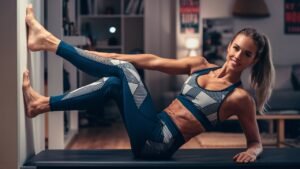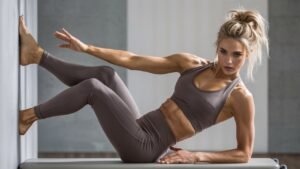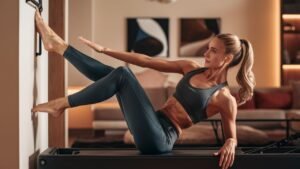Introduction to Pilates and Its Benefits
Pilates is a low-impact exercise method developed in the early 20th century by Joseph Pilates, a German physical trainer. Originally named “Contrology,” Pilates was designed to enhance physical and mental conditioning. Joseph Pilates emphasized the importance of mind-body synergy, which he believed was crucial for achieving optimal health. Over the decades, Pilates has evolved, integrating modern fitness principles while retaining its foundational focus on controlled movements and core stability.
At its core, Pilates is characterized by a series of controlled, precise movements that target various muscle groups. The fundamental principles of Pilates include concentration, control, centering, flow, precision, and breathing. These principles work in unison to improve physical strength, flexibility, and posture. One of the primary benefits of Pilates is its ability to enhance core strength. By focusing on the muscles of the abdomen, lower back, hips, and glutes, Pilates helps build a strong foundation that supports overall body function.
Another significant advantage of practicing Pilates is improved flexibility. The controlled stretching and lengthening movements increase the range of motion in muscles and joints, making everyday movements more fluid and effortless. Additionally, Pilates is well-known for its positive impact on posture. By strengthening the core and promoting proper alignment, it helps alleviate common issues such as back pain and muscle imbalances.
Beyond physical benefits, Pilates offers substantial mental health advantages. The emphasis on breath control and mindful movement fosters a meditative state, reducing stress and anxiety. Regular practice can enhance mental clarity and focus, contributing to overall well-being. Given its comprehensive benefits, Pilates is an excellent addition to a home fitness routine. It requires minimal equipment and space, making it accessible for individuals seeking to improve their physical and mental health in the comfort of their own home.
Setting Up for a Successful Home Pilates Workout
Creating an effective environment for a Pilates workout at home is crucial for maximizing the benefits and ensuring a safe practice. The first step is to gather the essential equipment. A high-quality yoga mat provides the necessary cushioning and support for various Pilates exercises. Resistance bands and small weights can help add intensity and variety to your workout, making it more challenging and engaging. Additionally, having a Pilates ball can enhance your core strength and stability exercises.
Optimizing your space is equally important. Choose an area in your home that offers enough room to move freely, ideally with enough space to stretch your arms and legs without any obstructions. Clear any potential hazards, such as furniture or clutter, to avoid accidents. A dedicated workout space can enhance your focus and commitment to your Pilates practice.
Creating a calming and motivating atmosphere can significantly impact the quality of your workout. Soft lighting and soothing music can help set a relaxing tone, making it easier to concentrate on your movements and breathing. Minimizing distractions, such as turning off your phone or informing household members of your workout time, can help maintain your focus and dedication.
A beginner-friendly Pilates workout plan should include a well-rounded mix of exercises. Start with a gentle warm-up to prepare your muscles and joints. Basic stretches and light cardio, such as marching in place, can be effective. Core Pilates movements, like the Hundred, Roll-Up, and Single Leg Stretch, form the foundation of your workout and target key muscle groups. Conclude with cool-down stretches to promote flexibility and aid in muscle recovery.
Safety considerations are paramount, especially for beginners. Always listen to your body and modify exercises to suit your fitness level. If you experience discomfort or pain, stop immediately and consult a professional if necessary. Gradually increase the intensity of your workouts as you build strength and confidence in your Pilates practice.




Leave a Comment